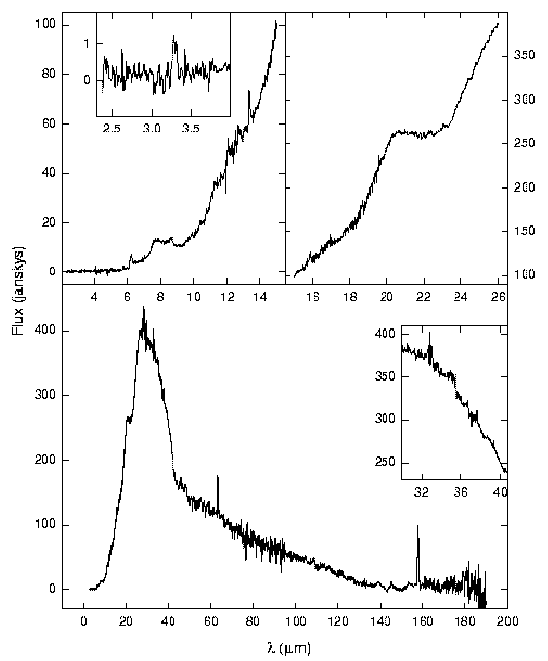A 2.4 to 197 micron ISO SWS & LWS spectrum of a new proto-planetary nebulae, IRAS 16594-4656.

Credit: ESA/ISO, LWS & SWS, P. Garcia-Lario et al.
A 2.4 to 197 micron ISO SWS & LWS spectrum of a new proto-planetary nebulae, IRAS 16594-4656.

The shapes and relative intensities of the various features found are consistent with a mixed population of transient decomposition products of large hydrogenated amorphous carbonaceous (HAC) grains, consisting of fullerenes with a different degree of hydrogenation, which we suggest to be the main carriers of the strong 21 micron feature, and a combination of small and large partially dehydrogenated cationic PAHs molecules excited by the visible radiation coming from the central star.
Additional features corresponding to crystalline silicates (mostly pyroxenes) are also tentatively detected, together with a possible very broad unidentified emission feature centered around 30 micron, previously reported to appear in combination with the 21 micron feature in other proto-planetary nebulae candidates.
The combination of features corresponding to O-rich and C-rich
dust grains found, if real, would suggest a recent change to a
C-rich chemistry in the outer envelope of IRAS 16594-4656.
Additional information on the observations of this object can be read in the paper ISO observations of IRAS 16594-4656: a new proto-planetary nebula with a strong 21 micron dust feature, by P. Garcia-Lario et al, accepted by Ap. J.
 Return to the Introduction Page
Return to the Introduction Page